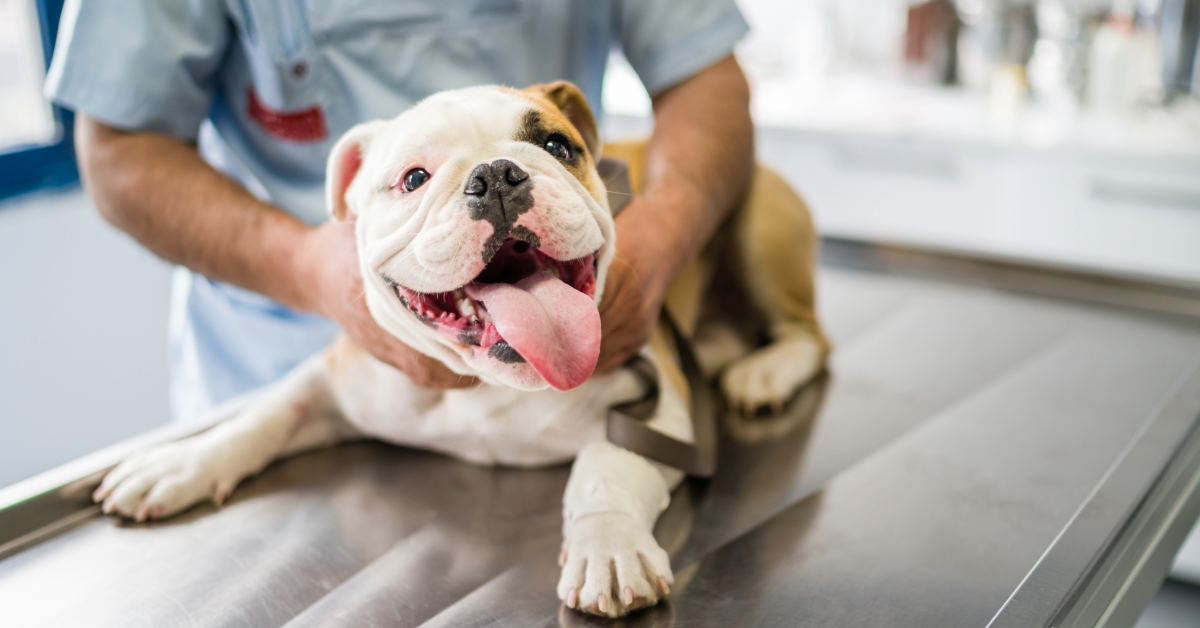A Personal Story: A Tough Vet Visit for a Sweet Foster
I have been fostering a sweet, affectionate dog for the past few months — calm at home and quick to offer love to anyone she meets. At a recent routine checkup, I finally accompanied her to the vet for the first time. Up to that point, I had not seen how she handled appointments, so I was not sure what to expect.
At first, she was her usual charming self — loving on the techs and wagging her tail as they greeted her. But once they took her to the back for a simple blood draw and vaccine, things changed. I waited in the lobby and could hear her “screaming” from the other room — a panicked, intense vocalization that was hard to ignore. When she returned, she was shut down and withdrawn. It took her a couple of days to fully return to her normal, affectionate self.
It was not a traumatic experience for me, but it did break my heart to realize how stressed she had been. And unfortunately, this type of response is more common than many pet owners realize. The good news? With intentional training and preparation, dogs can learn to better tolerate vet visits — and even walk in with more confidence and control.
Why Vet Visits Can Be Overwhelming for Dogs
Veterinary clinics are full of unfamiliar smells, bright lights, slippery floors, and strangers wearing scrubs. For many dogs, these environments can feel overwhelming — especially when combined with being restrained or handled in unfamiliar ways. Even dogs who are calm at home may react differently in a clinical setting.
Common signs of stress at the vet include:
- Trembling or panting excessively
- Pacing, hiding, or pulling toward the exit
- Growling, barking, or whining
- Refusing treats or freezing up
- Excessive shedding or drooling
- Urinating or defecating out of fear
Some stress is natural — just like it is for us in medical situations. The goal is not to eliminate all discomfort, but to help dogs feel prepared, develop coping skills, and recover quickly from challenging moments.
How to Prepare Your Dog for the Vet
1. Start with Handling Confidence at Home
One of the best ways to prepare your dog is to make everyday handling feel routine. This can include:
- Gently touching ears, paws, tail, and muzzle
- Practicing brief restraint or gentle holds
- Offering treats or praise during and after handling
- Using a consistent cue like “check” to build predictability
These small steps help normalize the types of touches and manipulations dogs experience during vet exams.
2. Practice Vet-Like Scenarios in Familiar Places
You can reduce the shock of the clinic environment by introducing similar experiences at home or in low-pressure environments. Try:
- Placing your dog on a raised surface or mat
- Having a friend approach wearing a white coat or gloves
- Mimicking gentle restraint or lifting
- Playing recorded sounds of barking dogs, clippers, or clinic noises
- Using scent wipes that mimic medical smells
Go slow, reward generously, and keep sessions short and positive.
3. Teach Cooperative Care Skills
Cooperative care training helps dogs participate more willingly in their own healthcare. Key behaviors include:
- Chin rest: Your dog places their chin on your lap or a towel to indicate readiness
- Paw lifts: For nail trims or inspections
- Muzzle training: Not just for safety — a properly conditioned muzzle can actually reduce stress
- Start buttons: Teaching your dog to opt-in (or opt-out) builds trust and reduces defensiveness
This approach promotes communication and helps dogs feel more in control of what is happening to them.
4. Normalize Car Rides
If the only time your dog gets in the car is to go to the vet, they may start associating the car itself with stress. Mix things up by:
- Taking short, treat-filled car rides to neutral or fun places
- Feeding meals in the car
- Practicing calm exits and entries with praise
- Ensuring your dog is secure with a harness or crate
The more predictable and positive the car ride becomes, the less it contributes to vet-related anxiety.
5. Visit the Clinic for Positive Experiences
Ask your veterinary office if you can schedule “happy visits.” During these visits:
- Your dog enters the clinic, gets treats and love from the staff, and leaves without any procedures
- These visits help your dog learn that the clinic is not always stressful
- Start with just stepping in the door, then build up to the scale, exam table, etc.
These low-pressure visits can go a long way in changing how your dog feels about the vet environment.
6. Support Their Emotional State
Some dogs benefit from extra emotional support as they build coping skills. Consider:
- Pheromone sprays (e.g., Adaptil)
- Calming vests or Thundershirts
- Natural supplements or prescribed medications when appropriate
- Favorite toys, blankets, or familiar scents from home
These tools are not a replacement for training, but they can make it easier for your dog to stay regulated in tough moments.
When to Begin This Training?
The best time to start is before you need it — with puppies or newly adopted dogs. But even older dogs with a history of stress can improve when given time, support, and a step-by-step approach. For dogs already showing fear at the vet, go slowly and reinforce every small success.
Incorporate these routines regularly, and remember: progress may be measured in inches, not miles.
Need Support?
If vet visits are difficult for your dog — or for you — you do not have to navigate it alone.
Explore our private training services for guidance tailored to your dog’s needs and temperament.
Building Confidence, One Step at a Time
Vet visits may never be your dog’s favorite event — and that is completely okay. Your goal is not perfection, but progress. By helping your dog learn how to cope, recover, and trust you through the process, you set them up for a lifetime of more manageable, less stressful care.

